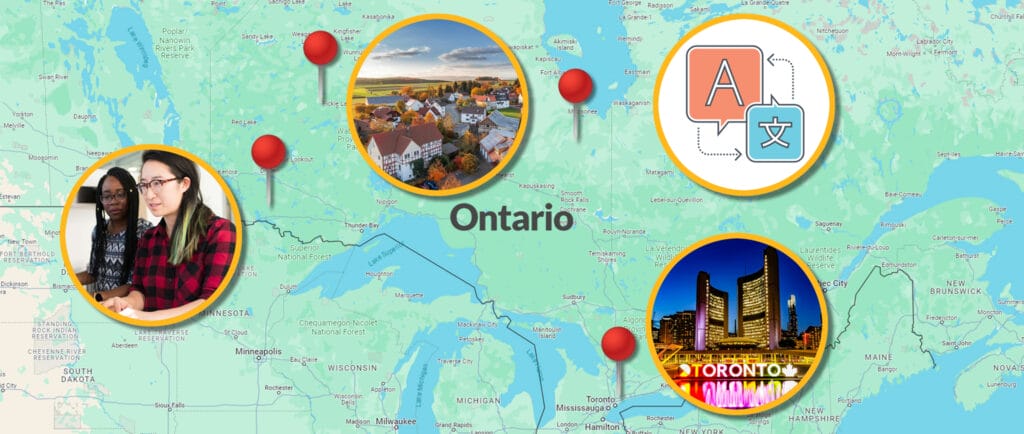Build Engagement Through Better Local Chapter Meetings
Chapters are a fundamental element of running an association. They are the grassroots—where the goals of collaboration and engagement are turned into action.
They’re often built around specific locations or causes, with a narrower focus than you might get at an annual meeting. Some chapter members may actually work together; others just share a community.
But ultimately, chapters offer a focused peer collaboration opportunity—with events at the center. Whether it’s a classroom-style experience, a networking event, or a happy hour, it can be an excellent way to strengthen ties within the event sector.
As a 40-year event veteran, Lynda Hoff, CMM, CMP, the manager for Member Experience and Events for the Ontario Nurses Association, is deeply familiar with the needs of chapters, both because of her current role, which oversees chapters throughout the province, and her prior work with the Toronto chapter of Meeting Professionals International.

“Engagement has changed and morphed over the decades, and will continue to do so as we move forward,” she says. “But I don’t think that personal connection, that human connection, will ever go away.”
In many ways, understanding chapter engagement comes down to understanding who your chapter members are and how they need to be served. And it turns out, they may not need to be in the same room anymore.
4 Fast Facts About Association Chapters

Association chapters are not a monolith—far from it. In fact, they can be sharply different in makeup and design. A few key facts about how chapters function:
1. Chapters are largely tethered to the main organization.
While chapters may have their own programming and organizational structure, they are designed to work within a larger framework. As Mariner Management & Marketing and BillHighway’s 2022 Chapter Performance & Benchmarking Report notes, more than three-quarters of the chapters it studied were either chartered or wholly-owned by the parent organization. This does have limits, however: The benchmark found that only 45% of chapters required its members to join the main organization.
2. Chapters can act as fully autonomous, however.
As McKinley Advisors notes, some chapters may choose to go with an autonomous model, which allows the chapter to focus on the needs of chapter members without direct influence from the parent organization. This can lead to more responsive chapter relations—while disconnecting the chapter from the national organization.
3. Chapters don’t have to be geographically oriented.
In recent years, improved technology has allowed the creation of chapters based on interest area rather than location, leading to the rise of “virtual chapters” in which people largely collaborate in purely digital settings.
4. The most important resource chapters offer is education.
According to the Chapter Performance & Benchmarking Report, 95% of chapters offer professional development events, the most popular chapter offering. General networking, at 82%, was previously almost as popular as education, though that has receded slightly in recent years, likely because of the pandemic.
Understand Who You’re Trying To Reach
Hoff makes clear that while ONA’s chapters vary wildly in proximity and size, creating unique dynamics depending on which part of Ontario the chapter is located in.
Association chapters have much to manage, and one of those things is physical distance, which can be a factor even among individual chapters. ONA, a trade union with more than 68,000 members, has chapters within five regions that differ sharply, creating the potential for vastly different membership experiences.
The largely rural Region 1, for example, covers parts of the province that can be difficult to reach by car. Meanwhile, Region 3 is based around Toronto, Canada’s largest city, making it possible not only for regular chapter meetings, but frequent regional meetings. In some cases, they’re even walkable, per Hoff.

“But in other areas where the transportation and the geographical distance is vast,” she asks, “then how do we do that?”
Additionally, not all members need the same things from their chapters. ONA, for one, has a Francophone membership contingent and Indigenous members. Those may require specialized offerings, like translation tools. Additionally, chapters are often an important way to introduce new generations of students to the fold.
Chapters are defined both by their regionalism and their ability to serve members with more specific needs—and chapter meetings should account for that.
Give Chapter Members Useful Content—And Connection
Chapter meetings can take many forms, but the most common type involves professional development. With that in mind, Hoff says it’s important to listen to the needs of chapter members to understand the educational opportunities that matter most to them. She recommends leaning into the event’s small scale.
“In a small chapter event, you know most of the people that are there, and you have the opportunity to connect with those folks that can truly help you figure out what that problem is, or give you a supplier that can help you, or a lead on something that you know will be able to solve that problem for you,” she says. “A large tent space? Maybe not so much.”

But with resources likely to be tighter than at traditional events, don’t be afraid to steal ideas and tweak them, either, Hoff says. “I don’t want to reinvent the wheel.”
ONA’s in-person chapter events have limited sponsor offerings, such as sponsored coffee stations, but the ultimate goal is to make room for interactions. Even if it’s a meeting to manage the basic business of the chapter, there should be room for networking at each event, as the scale makes such connections important.
“That space should be valued and that time should be cherished,” she adds. “Because you don’t get it very often.”
The Good & Bad Of Integrating Tech
Technology has shifted significantly in recent years, to the point where it often dominates the discussion, even with everyone in the same room. Hoff says smartphones are the biggest change she’s seen in her entire career. There’s a constant risk of distraction.
“In a classroom, I can say, ‘Put it away,’ but once you’re dealing with adults, they’re not going to put it away,” she says.
It’s not all bad, however. Hoff sees positive side effects from tech’s ice-breaking nature. For example, it was previously possible to walk into a chapter meeting and not know anyone beyond perhaps a name, or the person’s voice on the phone. But that has significantly changed in recent years.
“Technology allowed me to be able to physically see you,” Hoff says. “And now, when I am in person with you, it’s like long-lost friends. You come together, you know them, you know where you may have been.”
Mixing Virtual Into Chapter Events
The rise of virtual events has created new ways for chapters to interact, making them less tied to geographic areas. As the Mariner Management report states, chapters now have room to organize based on time zone and turn chapter events into hybrid events.

Leaders are often skeptical, but even so, the virtual elements speak for themselves, according to Hoff.
“They have seen that you can engage someone who may not be able to attend in person for whatever their circumstances, but they can still participate and still bring those grassroots issues to a larger table,” she says.
However, accommodation needs to be considered in this context. ONA uses EventMobi to offer auto-translation services for Francophone members. And of course, moderators need to ensure that people on the other end of the line don’t get lost in the shuffle.
“A lot of times you’ll hear people say, ‘I was part of a hybrid event, I was in person. And we forgot about them on the screen,’” Hoff says. “You have to really be intentional about making sure that the folks that are on-screen are included.”
On the plus side, hybrid events open up new avenues to sponsorship that might not have been so obvious before, with brand integration opportunities, such as the ability to post videos, that dig deeper than previously possible.
It’s possible the future of chapters might be a little more tech-friendly and less geography-dependent—and virtual event integrations might just be the way to get you there.
To find out how EventMobi can help you create more engaging meetings and events throughout the year, sign up for a free demo!